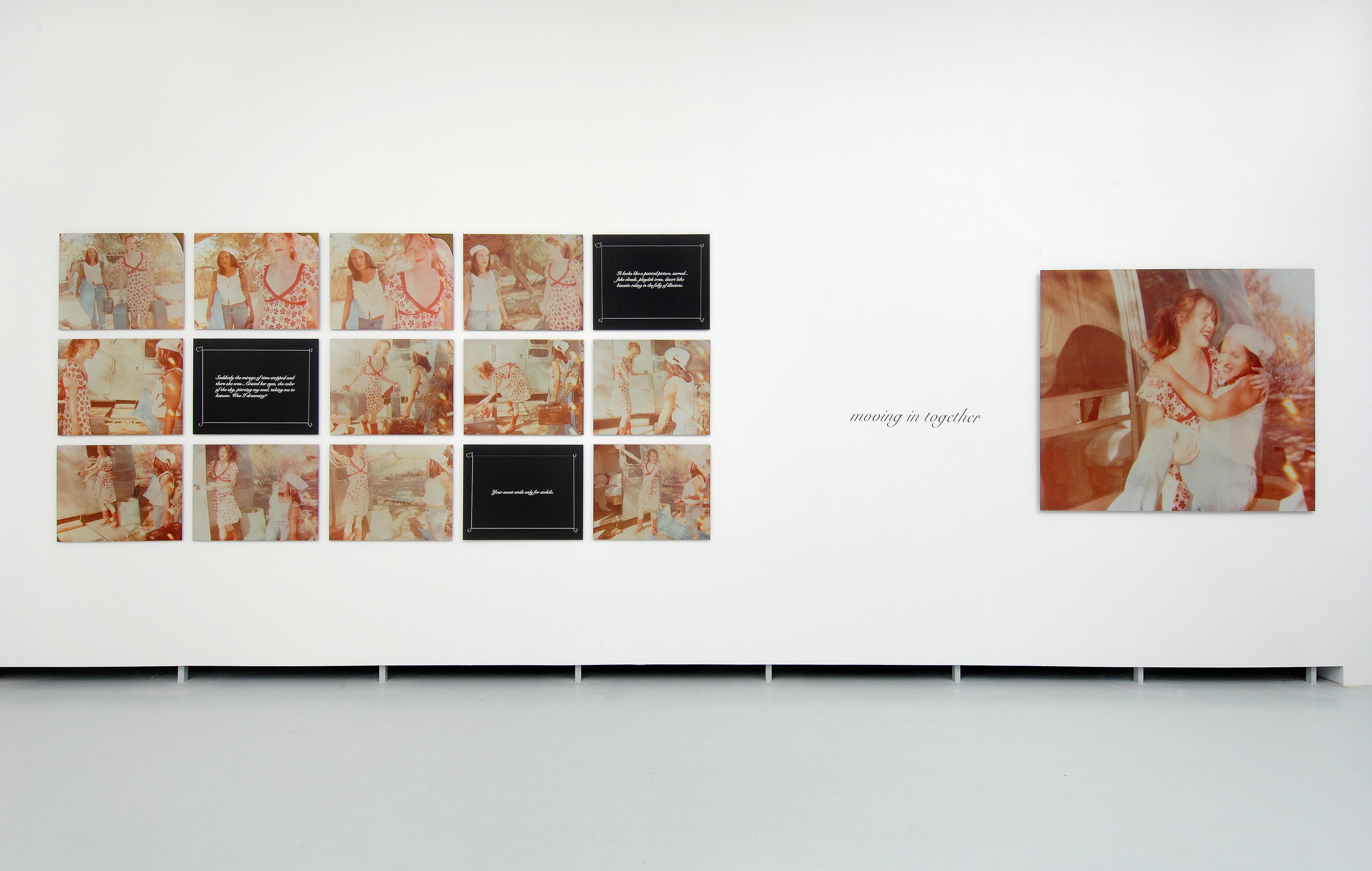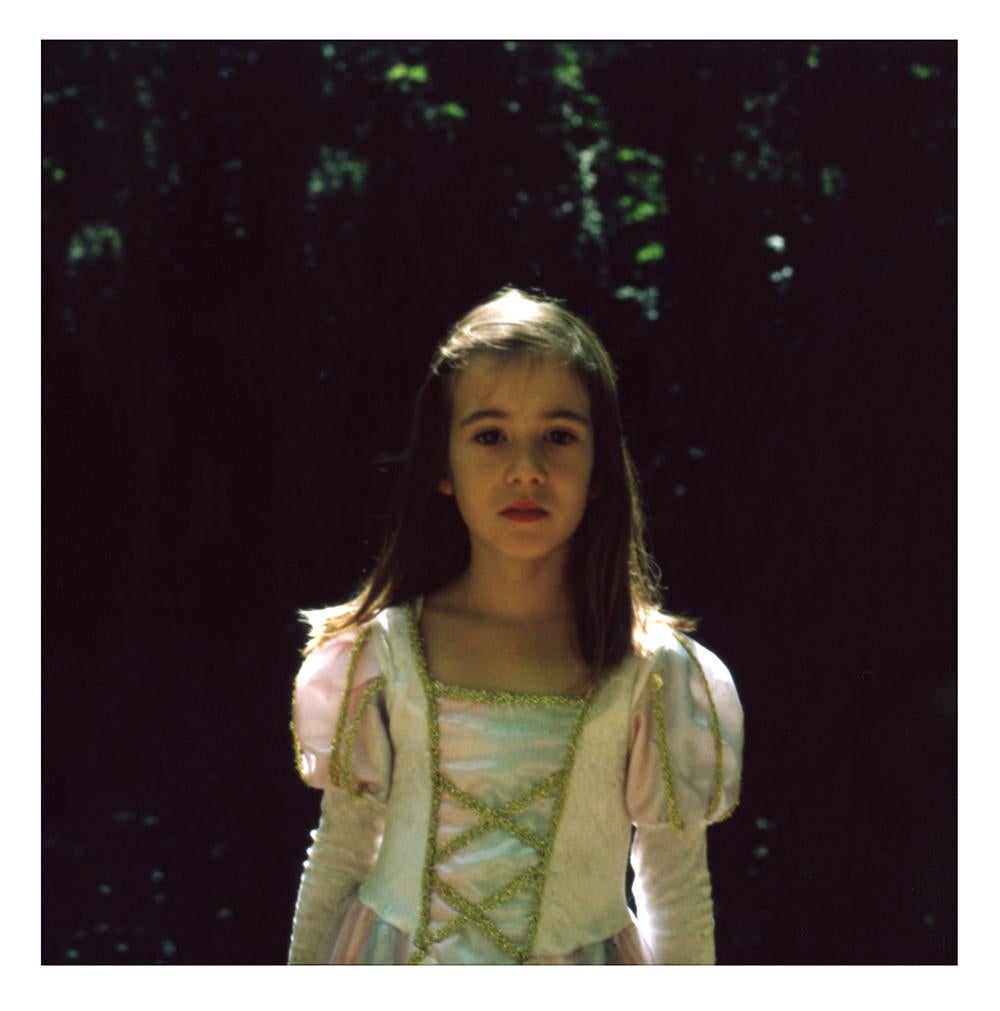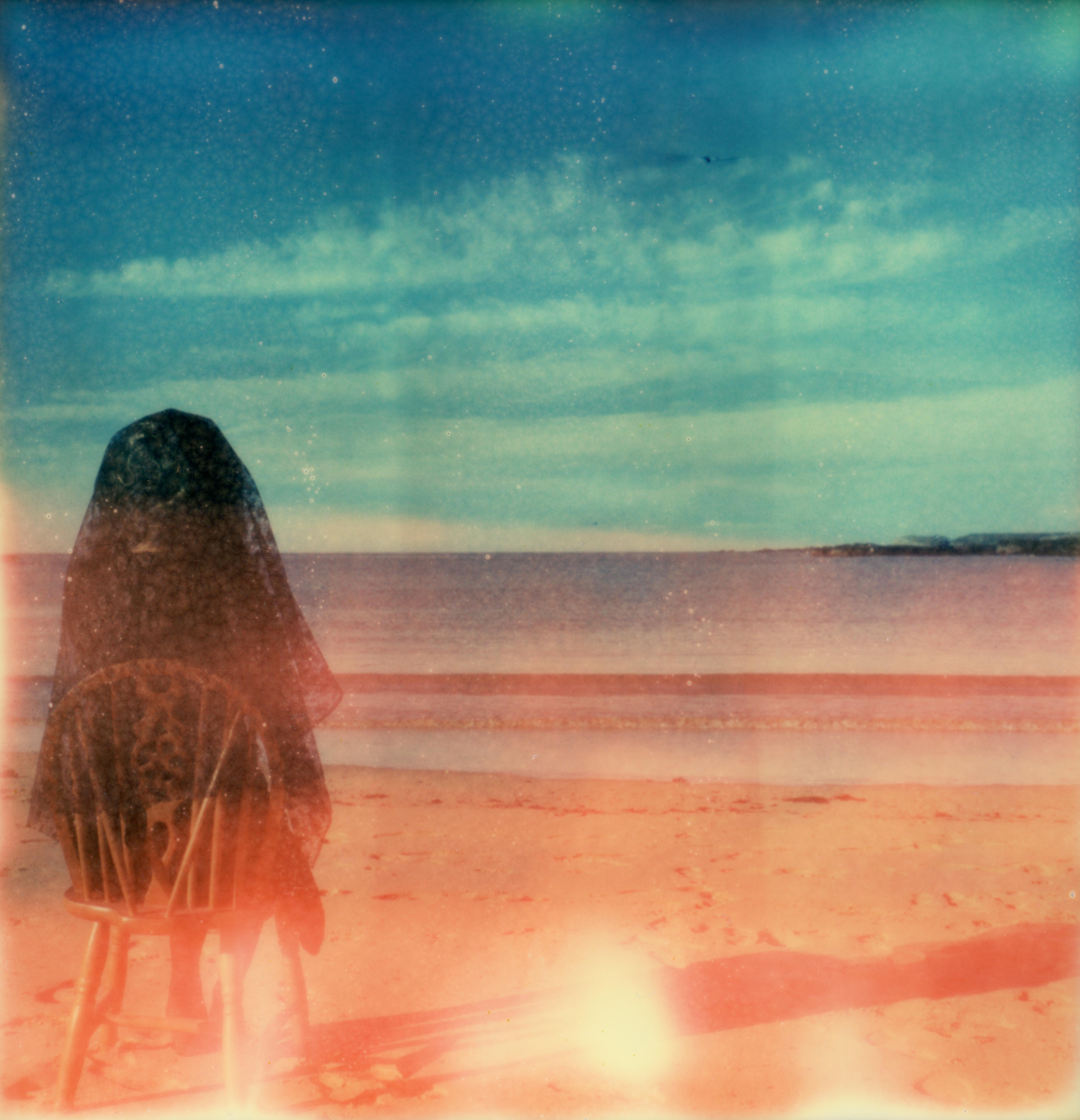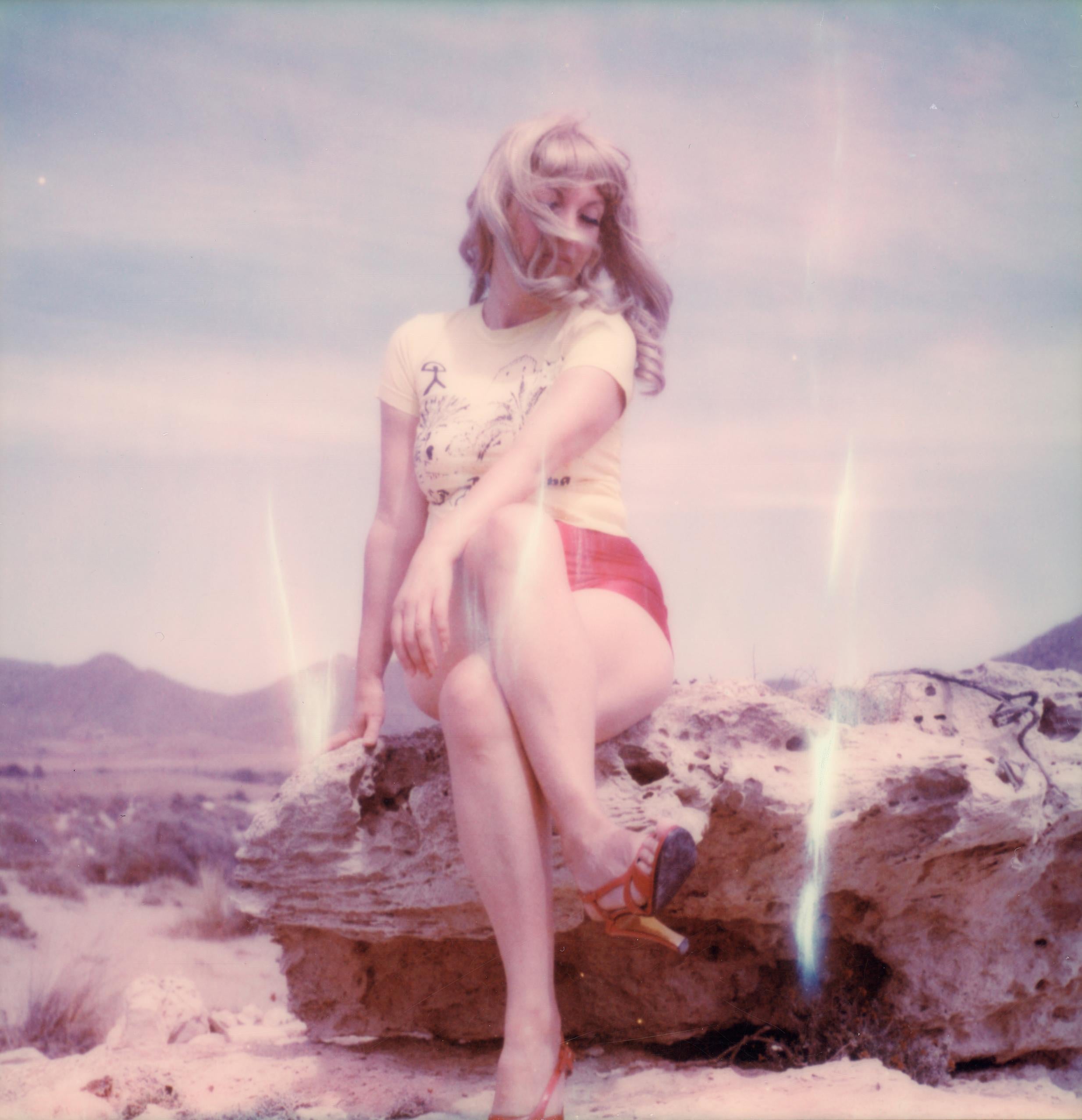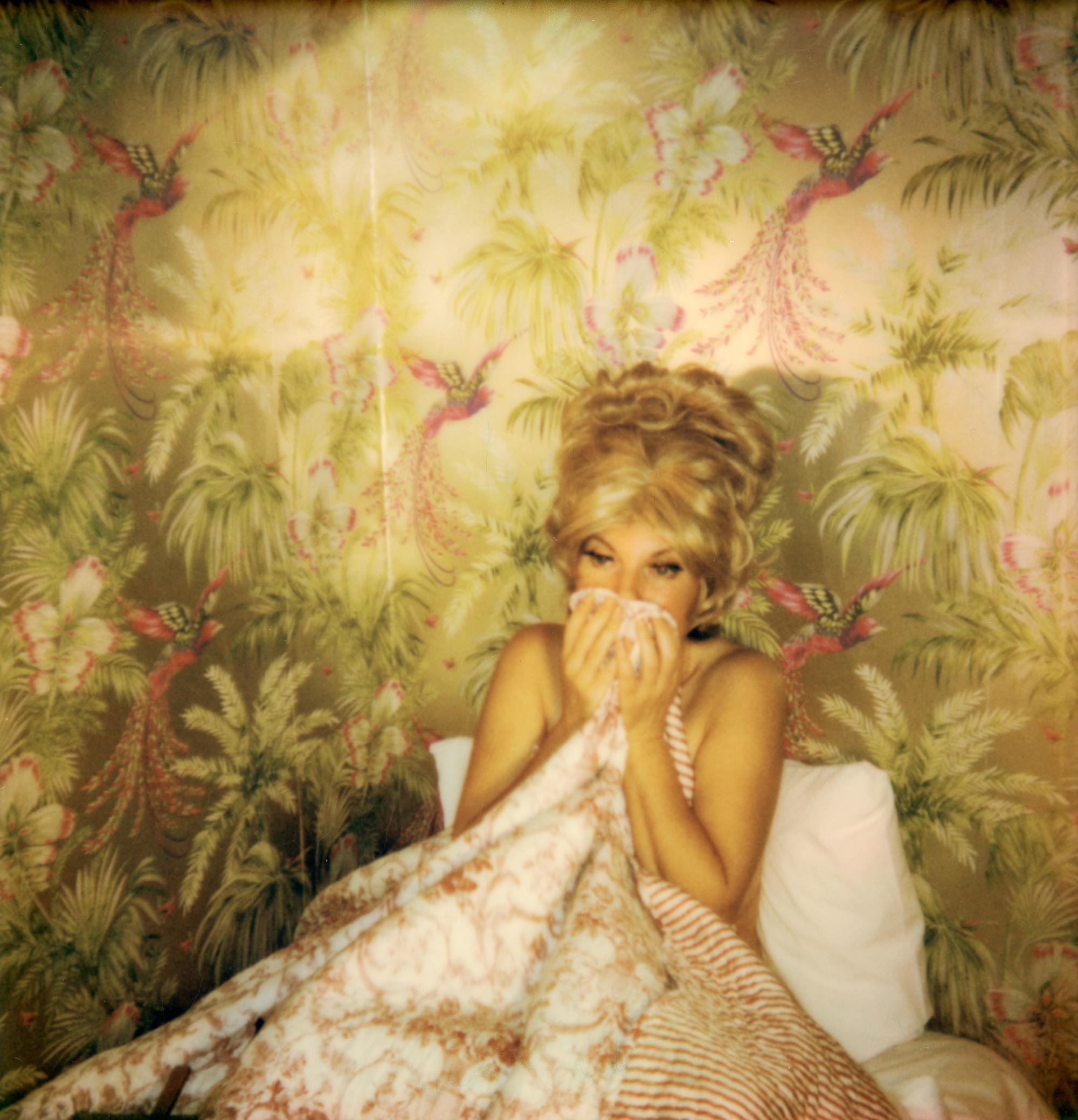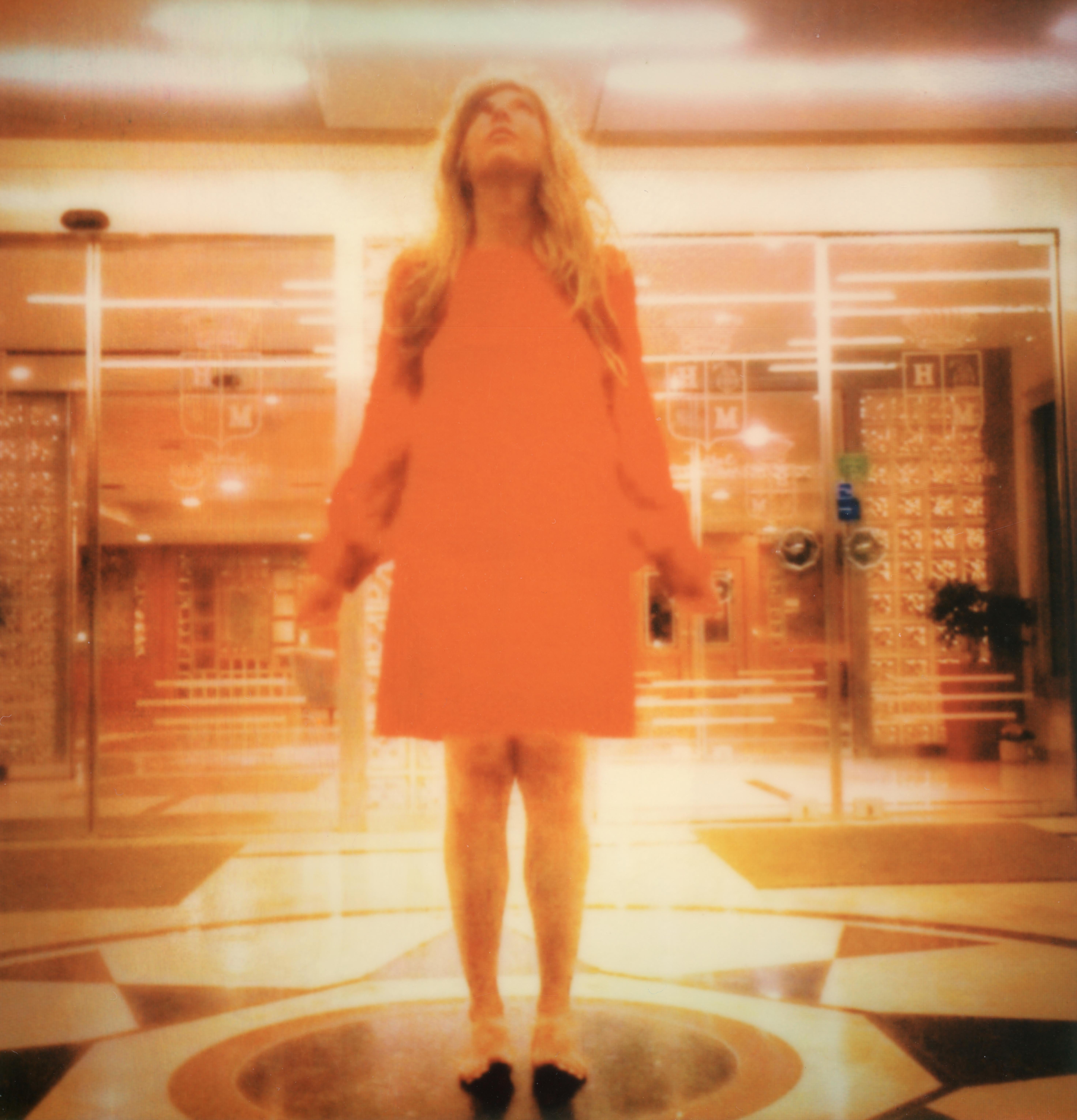Items Similar to Caitlin aka Jane Bond III Heavenly Falls - based on a Polaroid Original
Want more images or videos?
Request additional images or videos from the seller
Stefanie SchneiderCaitlin aka Jane Bond III Heavenly Falls - based on a Polaroid Original2016
2016
About the Item
'Caitlin aka Jane Bond III' (Heavenly Falls) - 2016
20x20cm,
Edition of 10,
Archival C-Print based on a Polaroid,
Not mounted.
Certificate and signature label,
artist inventory number: 19505.15
Stefanie Schneider interviewed by Dutch Filmmaker Willem Baptist for Instant Dreams Documentary.
published in the the catalog 'Instantdreams'
When did you first decide to work with Polaroids? Why do Polaroids seem to be so well tuned to our (artistic) senses, perception and minds?
I started using expired Polaroid film in 1996. It has the most beautiful quality and encapsulates my vision perfectly. The colors on one hand, but then the magic moment of witnessing the image appear. Time seems to stand still, and the act of watching the image develop can be shared with the people around you. It captures a moment, which becomes the past so instantly that the decay of time is even more apparent; – it gives the image a certain sentimentality. The Polaroid moment is an original every time.
Why use a medium from the past?
For me, analog has always been there in the present. For the new generation, analog is interesting because it's new to them. I understand that people growing up in a digital age will wonder about its usefulness, but it's theirs to recover if they want to. When I first started working with Polaroid, it wasn't the past. It was a partially forgotten medium, but it existed nonetheless. It is mine by choice. There is no substitute for tangible beauty.
Is it imperfect?
The imperfect perfection in a “wabi-sabi” kind of way.
Wabi-sabi (侘寂) represents a comprehensive Japanese world view or aesthetic centered on the acceptance of transience and imperfection. The aesthetic is sometimes described as one of beauty that is "imperfect, impermanent, and incomplete".[1]
'If an object or expression can bring about, within us, a sense of serene melancholy and a spiritual longing, then that object could be said to be wabi-sabi' [2] 'Wabi-sabi nurtures all that is authentic by acknowledging three simple realities: nothing lasts, nothing is finished, and nothing is perfect.'[3]
Is the Polaroid photograph recognizable or even sometimes cliché?
Absolutely! There's something cliché about the way I'm showing the American Dream. I live it myself, trying to find perfection in an imperfect world. Reaching for the horizon. The dream is broken; the cliché tumbles. There are different ways to involve an audience. You could make movies like Harmony Korine's "Gummo", a masterpiece in my view, which would estrange a large part of the audience. A certain film education is a prerequisite. Or you can start with clichés, the audience then feels safe, which lures them into the depth of your world without them even knowing it or understanding where exactly they are being led to. Appealing to emotions and the sub-conscious. Normal, Change, New Normal.
You continually revisit the landscape of the American West in your work. What draws you back to this scene?
Southern California represents a dream to me. The contrast of Northern Germany, where I grew up, to the endless sunshine of Los Angeles was what first attracted me. The American West is my dream of choice. Wide, open spaces give perspectives that articulate emotions and desires. Isolation feeds feelings of freedom or sometimes the pondering of your past. The High Desert of 29 Palms has very clear and vivid light, which is vital. Expired Polaroid film produces 'imperfections' that I would argue mirrors the decline of the American dream. These so called 'imperfections' illustrate the reality of that dream turning into a nightmare. The disintegration of Western society.
Are you playing with the temporality of the material and the value of the moment itself?
The value of the moment is paramount, for it is that moment that you're trying to transform. All material is temporary, it's relative, and time is forever.
Why does analog film feel more pure and intuitive?
It's tangible and bright and represents a single moment.
The digital moment may stay in the box (the hard drive / camera / computer etc.) forever, never to be touched, put into a photo album, sent in a letter, or hung on a wall. Printing makes it an accomplishment.
The analog world is more selective, creating images of our collective memory.
The digital worldwide clicking destroys this moment. The generation without memories due to information overload and hard drive failures. Photo albums are a thing of the past.
Why does it feel this way?
That's how the human instinct works.
When I was a child, every picture been taken was a special moment. Analog photographic film as well as Super-8 material were expensive treasures. My family's memories were created by choosing certain moments in time. There was an effort behind the picture. The roll of film might wait months inside the camera before it was all used. From there, the film required developing, which took more time, and finally, when the photos were picked up from the shop, the memories were visited again together as a family. Who knew then, how fleeting these times were. Shared memories was a ritual.
What's your philosophy behind the art of Polaroid pictures?
The 'obsolete' is anything but obsolete. Things are not always as they appear, and there are hidden messages. Our memories and our dreams are under-valued. It is there that real learning and understanding begins by opening yourself to different perspectives.
What inspired you to use stop motion cinematography?
My work has always resembled movie stills. I remember the first time I brought a box of Polaroids and slid them onto Susanne Vielmetter's desk (my first gallery). Instantly, it became apparent that there was a story to tell. The stories grew. It was undeniable to me, that the emerging story was where I was destined to go. I've made four short films before my latest feature film, "The Girl behind the White Picket Fence". This film is 60 minutes long with over 4000 edited Polaroids. It's important to remember that our sub-conscious fills in the blanks, the parts missing from the story allow a deeper and more personal experience for the viewer. That is, if you surrender yourself and trust me as the director to lead you somewhere you might not have been before.
Why do you think it is important to own art?
'We have art in order not to die of the truth'
Nietzsche
1 Koren, Leonard (1994). Wabi-Sabi for Artists, Designers, Poets and Philosophers. Stone Bridge Press. ISBN 1-880656-12-4.
2 Juniper, Andrew (2003). Wabi Sabi: The Japanese Art of Impermanence. Tuttle Publishing. ISBN 0-8048-3482-2.
3 Powell, Richard R. (2004). Wabi Sabi Simple. Adams Media. ISBN 1-59337-178-0.
Stefanie Schneider's new photographic works tell fantastic stories about her adopted Californian home. She seeks out faded American myths and distils auratically charged reality in a very personal and surprising way. She uses out-of-date Polaroid film, and the blemishes caused by the degenerated film stock, - are included in the composition in a painterly way. Exposure mistakes and low budget movie effects are combined to alienating effect. Everything shimmers and flickers before our eyes. The artist plays with the authentic poetry of the amateur, mixing strangely dreamy staging with random photochemical events. In the 16-part work Frozen, which is characterized by a strangely transcendent mood in the lighting, film-still-like pictorial clusters come together to form a mysterious story, with the artist herself as the lonely protagonist. the aesthetic is reminiscent of early Lynch films. The components of the elliptically choreographed events are scenes from an enchanted, gleaming winter landscape, together with "staged snapshots" of a pale young woman in her underskirts, who radiates the troubled reality of a mirage with her sleep walking presence. The story is presented in the manner of cinematic flashbacks or dream sequences. Stage blood and a knife are used to evoke a crime of passion whose surreal attractiveness is derived from the scenic openess of what is shown. The deliberate use of old instant picture stock establishes in a richly faceted way the ephemeral quality of vulnerability and transience within a reality that is brittle from the outset. The American Stars and Stripes, recently updated as the absolute epitome of a patriotic signifier, is the subject of the 9-part work Primary Colors (2001). Schneider's reassuringly European view, free of undue emotion, presents the Stars and Stripes motif in a strangley alienated form: she shows stills with phases of fluttering violently in the wind, even torn in some cases, and the poor film stock emphazises the fragility of the icon even more.
FlashART - Sabine Dorothee Lehner
(translated from German by Michael Robinson)
- Creator:Stefanie Schneider (1968, German)
- Creation Year:2016
- Dimensions:Height: 7.88 in (20 cm)Width: 7.88 in (20 cm)Depth: 0.04 in (1 mm)
- Medium:
- Movement & Style:
- Period:
- Condition:
- Gallery Location:Morongo Valley, CA
- Reference Number:1stDibs: LU65238636452
Stefanie Schneider
Stefanie Schneider received her MFA in Communication Design at the Folkwang Schule Essen, Germany. Her work has been shown at the Museum for Photography, Braunschweig, Museum für Kommunikation, Berlin, the Institut für Neue Medien, Frankfurt, the Nassauischer Kunstverein, Wiesbaden, Kunstverein Bielefeld, Museum für Moderne Kunst Passau, Les Rencontres d'Arles, Foto -Triennale Esslingen., Bombay Beach Biennale 2018, 2019.
About the Seller
4.9
Platinum Seller
These expertly vetted sellers are 1stDibs' most experienced sellers and are rated highest by our customers.
Established in 1996
1stDibs seller since 2017
956 sales on 1stDibs
Typical response time: <1 hour
- ShippingRetrieving quote...Ships From: Morongo Valley, CA
- Return PolicyA return for this item may be initiated within 7 days of delivery.
More From This SellerView All
- Moving in Together (Till Death do us Part) - analog, mounted, InstallationBy Stefanie SchneiderLocated in Morongo Valley, CAMoving in Together (Till Death do us Part) - Installation - 2008 Edition of 5. 16 analog C-Prints , hand-printed by the artist on Fuji Crystal Archive Paper, based on 13 Polaroids, ...Category
Early 2000s Contemporary Color Photography
MaterialsMetal
- Gabriela at 7 - Contemporary, Polaroid, Photograph, Youth. 21st Century, ColorBy Cristina FontsareLocated in Morongo Valley, CAGabriela at Seven (2015) 40x40 cm, Edition of 10 plus 2 Artist Proofs. Giclée Print on Hahnemühle Fine Art Baryta, based on a Fuji Instant Film. Signed on back with Certificate. N...Category
2010s Contemporary Color Photography
MaterialsC Print, Archival Paper, Color, Archival Pigment, Polaroid
- The Green Ray - Contemporary, Polaroid, Photograph, Figurative, PortraitBy Clare Marie BaileyLocated in Morongo Valley, CAThe Green Ray (2012) Edition of 10 40 x 40 cm - Digital C-Print based on a on a Polaroid, Not mounted. Signed on back with certificate. Artist: Influenced by Fellini’s 8 1/2 and...Category
2010s Contemporary Color Photography
MaterialsPhotographic Paper, Photographic Film, C Print, Color, Polaroid
- All Around the Rock - Contemporary, Polaroid, Photograph, Figurative, PortraitBy Clare Marie BaileyLocated in Morongo Valley, CAAll Around the Rock Edition of 10 - 40 x 40 cm. Digital C-Print based on a on a 600 Polaroid. Signed on back and certificate. Not mounted. All around the Rock (Shot 2019 on SX70 f...Category
2010s Contemporary Color Photography
MaterialsPhotographic Paper, Photographic Film, C Print, Polaroid, Color
- La Folie - Contemporary, Polaroid, Photograph, Figurative, Woman, 21st CenturyBy Clare Marie BaileyLocated in Morongo Valley, CALa Folie - 2018 - Edition of 10, 40x40cm, digital C-Print based on a Polaroid. Signed on back and certificate. Not mounted. about this work: La Folie (Shot 2018 on 600 Film) In part this image was influenced by the films Les Diaboliques...Category
2010s Contemporary Color Photography
MaterialsC Print, Photographic Paper, Color, Polaroid
- Some Lapse of Time - Contemporary, Polaroid, Photograph, Figurative, PortraitBy Clare Marie BaileyLocated in Morongo Valley, CASome Lapse of Time (The Visit Series), 2018, Edition of 10 - 40 x 40 cm - Digital C-Print based on a on a 600 Polaroid, Not mounted. Signed on back and certificate. The Visit i...Category
2010s Contemporary Color Photography
MaterialsPhotographic Paper, Photographic Film, C Print, Color, Polaroid
You May Also Like
- QE 1 1566By Jack PernoLocated in Chicago, ILArchival Pigment Print Edition of 25 Frame size: 26.5 x 23 inches This photograph is a digital reproduction of an original 8 x 10" polaroid that was manipulated by hand. Add...Category
21st Century and Contemporary Contemporary Color Photography
MaterialsPolaroid, Inkjet, Archival Ink, Archival Paper
- Kissing Priests (Polaroid Transfer of Embracing Clergymen on Rives BFK)By Mark BeardLocated in Hudson, NYKissing Priests image size: 8 x 10 inches Polaroid Transfer on 22 x 15 inch Rives BFK paper, unframed signed SM Beard in pencil on bottom right corn...Category
1990s Contemporary Color Photography
MaterialsPolaroid, Archival Paper
- Tennessee Williams (Polaroid Transfer of American Playwright his Reflection)By Mark BeardLocated in Hudson, NYimage size: 8 x 10 inches Portrait of Tennessee Williams Unique Polaroid Transfer on 22 x 15 inch Rives BFK paper, unframed signed SM Beard in penci...Category
1990s Contemporary Color Photography
MaterialsPolaroid, Archival Paper
- Musei Vaticani, Museo Pio Clementino, Sala a Croce GrecaBy Massimo ListriLocated in New York, NYMusei Vaticani,Museo Pio Clementino,Sala a Croce Greca, 2014 Chromogenic print Edition of 5 Signed, dated, and numbered on verso label 39.5 x 47.5 inches, edition of 5 47....Category
2010s Contemporary Color Photography
MaterialsC Print
- Cat Story #7 – Miles Aldridge, Woman, Cat, Animal, Contemporary, Pop art, colourBy Miles AldridgeLocated in Zurich, CHMILES ALDRIDGE (*1964, Great Britain) Cat Story #7 2008 Chromogenic print Image 116,8 x 152,4 cm (46 x 60 in.) Sheet 128,8 x 164,4 cm (50 3/4 x 64 3/4 in.) Frame 133,8 x 169,4 x 5 c...Category
Early 2000s Contemporary Color Photography
MaterialsC Print
- Castello di Rivoli II - TorinoBy Massimo ListriLocated in New York, NYCastello di Rivoli II - Torino 2007 C print Edition of 5, plus AP signed and numbered on the verso label The Rivoli Castle was built in the 11th century on the morainic hill as ...Category
21st Century and Contemporary Contemporary Color Photography
MaterialsC Print
